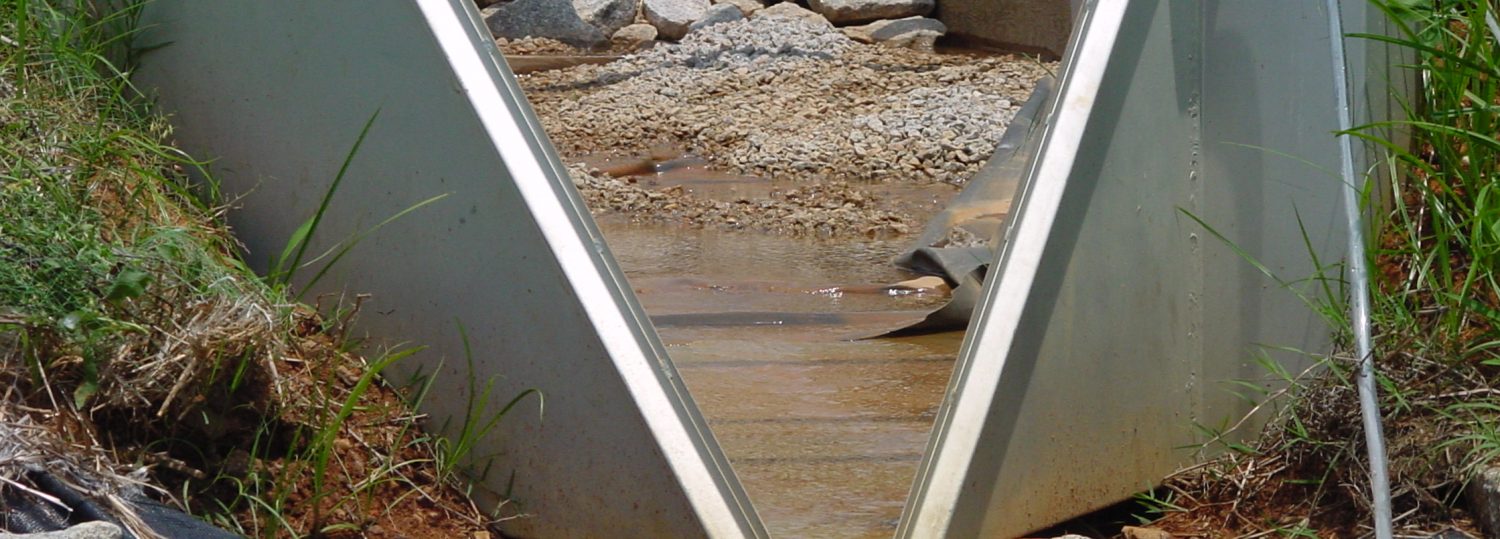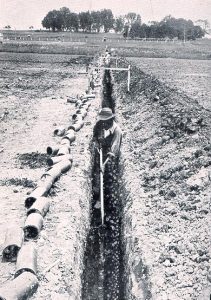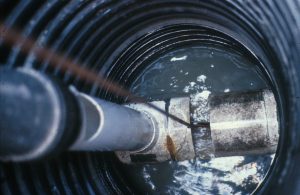
About
Applied Drainage Technologies
Drainage of poorly drained soils can produce millions of acres of highly productive farmland in the US. Much of that drained cropland is in NC, predominately in the coastal plain region. The Bio & Ag Engineering department has been a leader in developing the practices to make land more productive; in fact, our department’s lineage can be traced back to hiring of two drainage engineers in 1913.
Drainage technology has improved in both the methods of installation and the materials used. Early drainage systems consisted primarily of networks of open ditches and canals.

Later subsurface drains made of clay “tiles” and more recently plastic perforated corrugated pipe were integrated into the designs of many systems. Early drainage systems were dug by hand, while today installation of drainage ditches and drainage pipe can be accomplished with laser-guided machinery.
Problems associated with over-drainage and excess nutrient loss has led to implementation of water table management with controlled drainage. Water control structures such as flashboard risers can be installed in key locations to help manage drainage export. Management of these systems can both produce timely drainage and maximize water storage within the cropped fields. In addition, minimizing drainage outflow also minimizes excess nutrient losses, leading to more sustainable agricultural practices.

Many factors such as soil type, precipitation, and cropping rotation are used to determine optimal drain spacing. To maximize the economic benefit of drainage systems, the computer model DRAINMOD was developed by BAE emeritus professor Dr. Wayne Skaggs during the late 1970s. This model is used to determine the ideal spacing of drains to maximize crop yields and profit. DRAINMOD-NII was developed in the early 2000’s to address nutrient loss concerns.
In addition to agricultural drainage, extension provides guidance and support in developing sustainable drainage designs for applications such as forestry operations and golf courses. Recently, a new tool to estimate the lateral effect of drainage canals on adjacent wetlands has been developed.

Dr. Mike Burchell
Extension Specialist
NC State University
Biological & Agricultural Engineering
Voice: (919) 515-7327
Fax: (919) 515-6772
e-mail: mike_burchell@ncsu.edu
Other Researchers:
Dr. Mohamed Youssef
Robert Evans, emeritus professor
Wayne Skaggs, emeritus professor